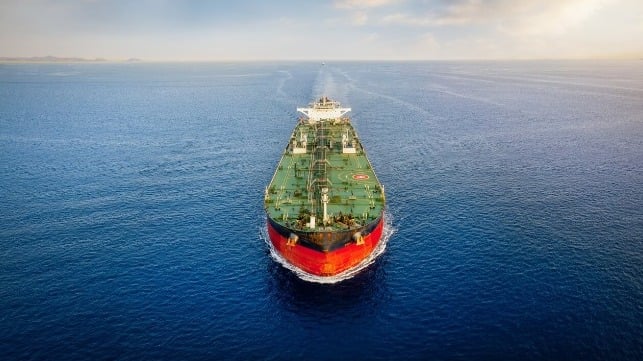Tanker Prices Are Soaring, and Shipyards Stand to Benefit

Disrupted trade patterns, tight shipyard availability and a dearth of new deliveries are all driving up prices for crude tankers. It's a boom market for shipowners, and it's shaping up to be lucrative for yards as well: the cost to build a new VLCC is now about 50 percent higher than it was in 2020, according to Athens-based shipbroker Xclusive.
The reasons for strong demand are geopolitical. Sanctions have cut off Russia's access to the European energy market, so its Baltic and Black Sea exports have to be delivered to faraway buyers in India or China. That would normally mean a transit through the Suez Canal and the Red Sea - but this route is now much less attractive because of Houthi attacks on shipping. Instead, more tankers are taking the long way around the Cape of Good Hope, adding more miles for every voyage.
Meanwhile, as tonne-mile demand goes up, the size of the tanker fleet is staying about the same. Because of a dearth of ordering activity in recent years, only two VLCCs will deliver in 2024, and just a handful next year. This is a small fraction of the typical rate of deliveries.
These supply and demand patterns all bode well for tanker resale values, and it is a seller's market. In one exceptional recent example, an eight-year-old VLCC reportedly fetched more than what it cost when new in 2016.
"In the VLCC sector, five-year-old vessels were valued around $70 million [four years ago], while currently they would cost a shade below $110 million. During the same period, both 10 and 15-year-old prices have increased by around 67 percent," Xclusiv reports.
The surge in value bodes well for the Asian yards that build the vast majority of the world's tonnage. Already flush with container ship and LNG carrier orders, the leading Chinese, Korean and Japanese yards have been able to demand favorable terms, according to DNV tanker business director Catrine Vestereng.
Newbuild prices have risen accordingly, and are up by about half since late 2020, Xclusiv reports. Even so, tanker owners are jumping into the market. Trafigura has reportedly just ordered its first owned VLCC, and in a sign of the times, it is working with a less-prominent Chinese yard. DHT has also announced that it has ordered four VLCCs from South Korean builders, with options for four more. The tanker owner is paying an average of $129 million for each hull.
Even at these high prices, the investment brings a long-term opportunity for shipowners. The orderbook stands at just three percent of the VLCC fleet, and a third of the fleet is aging out. About 30 percent of all VLCCs and Suezmaxes are at least 15 years old now, according to DNV. Since blue-chip charterers want new tonnage, and there is little to be found, shipowners who order now for delivery in 2027 may find that their newbuilds are in demand.
